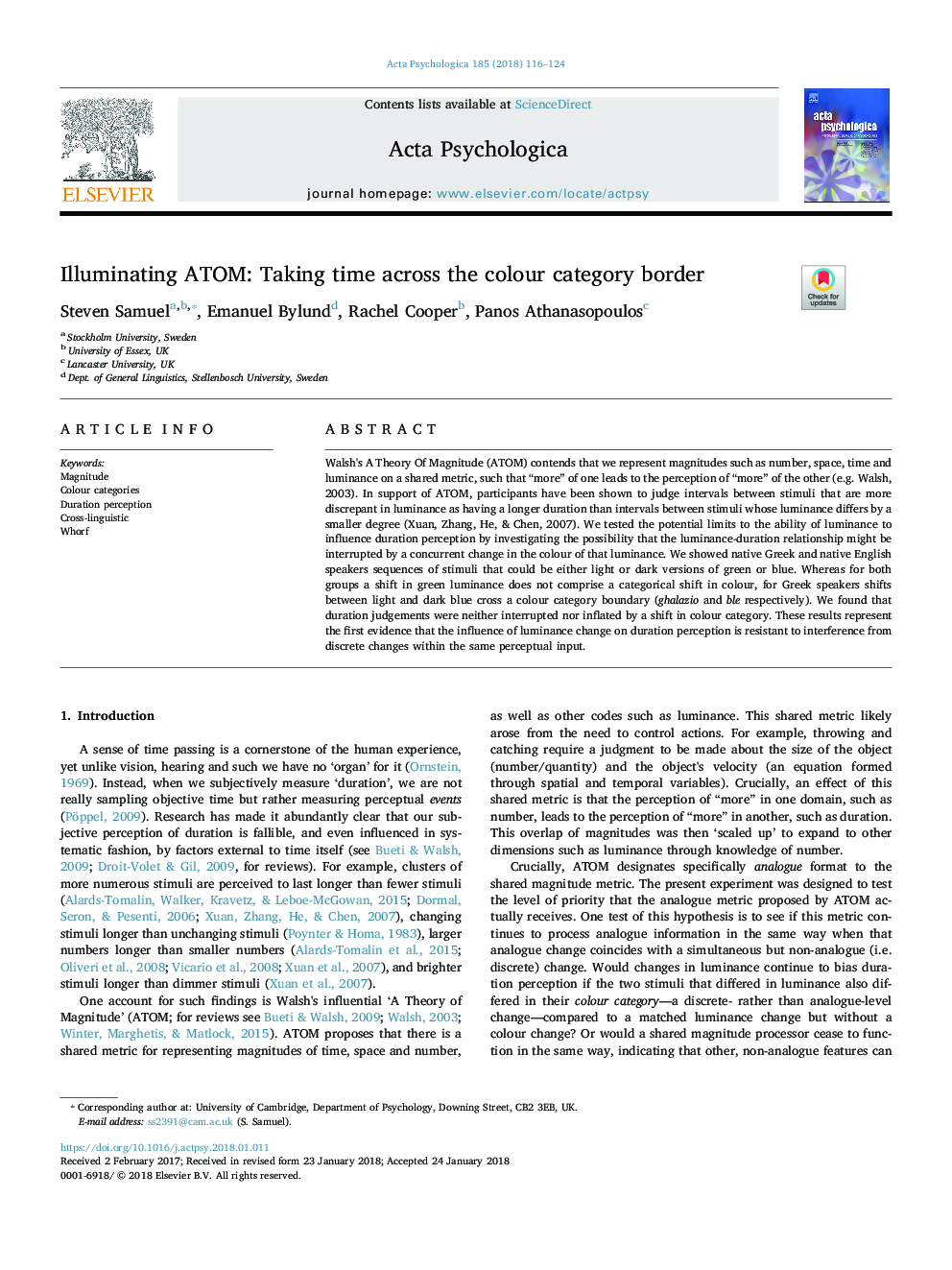| Article ID | Journal | Published Year | Pages | File Type |
|---|---|---|---|---|
| 7276748 | Acta Psychologica | 2018 | 9 Pages |
Abstract
Walsh's A Theory Of Magnitude (ATOM) contends that we represent magnitudes such as number, space, time and luminance on a shared metric, such that “more” of one leads to the perception of “more” of the other (e.g. Walsh, 2003). In support of ATOM, participants have been shown to judge intervals between stimuli that are more discrepant in luminance as having a longer duration than intervals between stimuli whose luminance differs by a smaller degree (Xuan, Zhang, He, & Chen, 2007). We tested the potential limits to the ability of luminance to influence duration perception by investigating the possibility that the luminance-duration relationship might be interrupted by a concurrent change in the colour of that luminance. We showed native Greek and native English speakers sequences of stimuli that could be either light or dark versions of green or blue. Whereas for both groups a shift in green luminance does not comprise a categorical shift in colour, for Greek speakers shifts between light and dark blue cross a colour category boundary (ghalazio and ble respectively). We found that duration judgements were neither interrupted nor inflated by a shift in colour category. These results represent the first evidence that the influence of luminance change on duration perception is resistant to interference from discrete changes within the same perceptual input.
Related Topics
Life Sciences
Neuroscience
Cognitive Neuroscience
Authors
Steven Samuel, Emanuel Bylund, Rachel Cooper, Panos Athanasopoulos,
